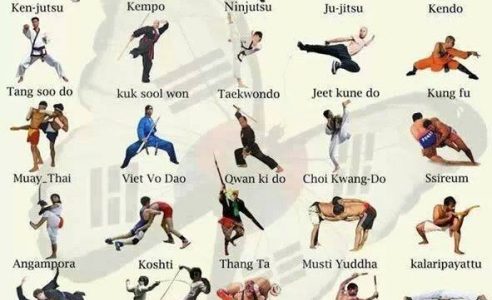A Thorough Review Of Martial Arts Styles: From Martial Arts To Kung Fu
A Thorough Review Of Martial Arts Styles: From Martial Arts To Kung Fu
Blog Article
Content Produce By-Braun Drew
Did you know that there are over 200 various styles of martial arts exercised worldwide? From Martial Arts to Martial Art, each design supplies an unique mix of strategies, approaches, and social influences.
In this detailed summary, you will explore the interesting world of fighting styles and check out the beginnings, background, and key differences between different designs.
From the ancient battlefields of Asia to the modern training dojos, fighting styles have actually developed and spread across the globe, fascinating millions with their elegance, power, and technique.
Whether you are a beginner looking to explore the world of fighting styles or a skilled expert seeking to broaden your understanding, this article will provide important understandings into the training techniques and viewpoints behind each style.
Discover the tricks behind the fluid movements of Tai Chi, the eruptive strikes of Muay Thai, and the disciplined accuracy of Taekwondo.
Get ready to start a journey via the varied and captivating world of martial arts!
The Beginnings and Background of Martial Arts
Get ready to dive into the fascinating origins and exciting background of fighting styles, from its ancient beginnings to the varied styles we know and like today!
Martial Arts have a rich and diverse background that goes back countless years. All of it began in old worlds, where people created battle strategies for protection and war.
In China, the earliest evidence of martial arts can be mapped back to the Zhou Dynasty, around 1122-256 BCE. These early kinds of combat were affected by standard Chinese philosophies, such as Confucianism and Taoism.
As time went on, fighting styles infected other parts of Asia, consisting of Japan, Korea, and Southeast Asia, each region developing its own unique styles.
Today, martial arts continue to advance, with specialists from all over the world sharpening their abilities and protecting the practices of their chosen style.
Trick Distinctions In Between Martial Art Styles
Comprehend the subtle subtleties that identify one martial art design from one more, and experience the profound effect these distinctions can carry your individual development and advancement. When comparing different martial art styles, it is important to consider different factors that set them apart. Right here are some essential differences to bear in mind:
- Striking Strategies:
- Martial arts highlights powerful strikes making use of strikes, kicks, and knee strikes.
- Kung Fu focuses on a large range of strikes, consisting of strikes, kicks, and open-handed strategies like palm strikes and finger strikes.
- Ideology and Strategy:
- Martial arts locations emphasis on discipline, respect, and self-defense.
- Martial art includes a more comprehensive philosophy that consists of protection, wellness and wellness, and spiritual development.
By understanding these crucial differences, you can choose the fighting style style that aligns ideal with your goals and goals, and start a trip of individual growth and self-discovery.
Training Methods and Approaches
Immerse yourself on the planet of martial arts as you explore the distinct training techniques and viewpoints that form the trip of self-discovery and personal growth.
In what is the best martial arts for kids , training focuses on creating rate, power, and accuracy through repeated motions and katas. The approach stresses self-control, regard, and self-constraint.
Martial art, on the other hand, positions a strong focus on fluidity, versatility, and agility. It incorporates a wide variety of movements, including kicks, punches, and throws, and often includes training in animal-inspired designs. The approach of kung fu centers around equilibrium, consistency, and the cultivation of internal power.
Both karate and kung fu usage types of competing to establish practical battle skills. Nonetheless, while martial arts prefers direct activities and direct strikes, martial art emphasizes round activities and redirection of an opponent's pressure.
Eventually, both designs provide special training approaches and philosophies that can lead to individual development and self-mastery.
Conclusion
So there you have it, my friend. You have actually journeyed through the fascinating world of fighting styles, from karate to martial art and whatever in between.
Like a warrior honing their skills, you've uncovered the abundant history and diverse strategies.
Currently, equipped with this understanding, you can embark on your own fighting styles experience.
Whether kempo martial arts pick to harness the disciplined power of karate or the liquid poise of martial art, bear in mind that the true stamina lies within you.
So leave, my friend, and let loose the warrior within.
